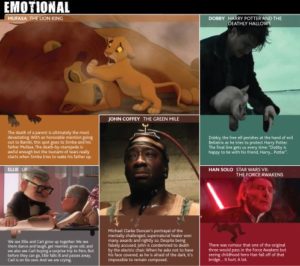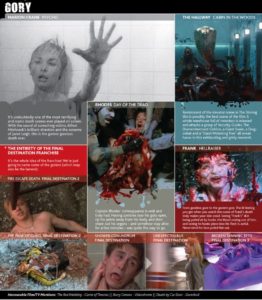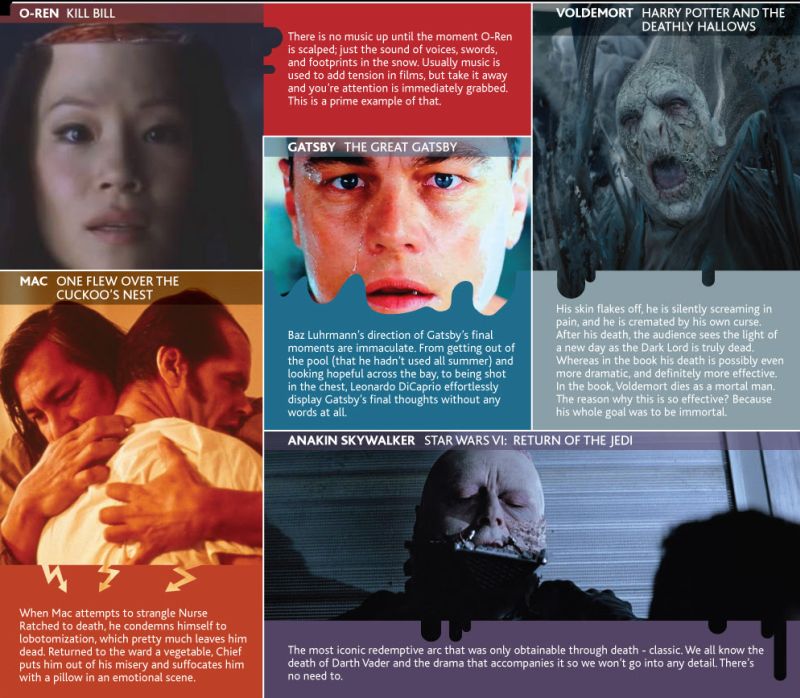“Everyone dies. Some die because they deserve to; others die simply because they come from Minneapolis. It’s random and it’s meaningless.” John Malkovich, ‘In The Line Of Fire’.
Deaths have been a staple of cinema pretty much since its inception. Killing a character, or at least leaving the threat of death, is a sure-fire way to engage an audience, and it can be a cheap way to enliven a film that’s going nowhere. A great movie death can be unforgettable, moving, devastating, sometimes even funny.

Notable early film deaths include ‘King Kong’ and ‘Bambi’, but perhaps the best deaths are the most unexpected ones. In 1960, Janet Leigh was a big star, and received top billing in Alfred Hitchcock‘s ‘Psycho’. Thanks to Hitchcock’s highly secretive methods during filming, few, if any, cinema goers expected her demise just 47 minutes into the film, in what has become perhaps the most famous and iconic on screen deaths.
Kevin Spacey, similarly top-billed (over the then almost unknown Russell Crowe and Guy Pearce) in the late Curtis Hanson‘s adaptation of the classic James Ellroy novel ‘L.A. Confidential’ lasts about 45 minutes longer than Leigh. Fans of Ellroy’s labyrinthine novel weren’t surprised that Spacey’s character Jack Vincennes didn’t last the distance, but even we were shocked by the method, as Hanson and co-writer Brian Helgeland dispensed almost entirely with the intricate plot of the novel. For anyone unfamiliar with the source material, the sudden death of Vincennes at the hand of Dudley Smith (a sudden bullet to the heart over a cup of tea in Smith’s kitchen) was truly shocking, not least due to Spacey pulling off one of the most convincing deaths you’ll ever see, partly aided by a piece of clever lighting, which actually makes it look like you see the light going out in his eyes.
A considerably less iconic but no less surprising example of offing your star was ‘Deep Blue Sea’. A solid ensemble including Saffron Burrows, Thomas Jane and L.L. Cool J. was supplemented with the star status of Samuel L. Jackson. His presence turned out to be merely a ruse (perhaps signposted by his ‘and’ status on the movie poster) as he was shredded in the middle of a rousing monologue by a poorly rendered C.G.I. shark.
If the ‘and’ was a warning that Jackson wasn’t destined to make the end of the film, there are some actors whose very presence in the cast should alert the viewer to their imminent demise. If Facebook memes were to be believed, the actor to die most frequently on screen is Sean Bean, and while he is certainly killed with undeniable regularity, he’s some way from the top of the screen deaths table. Horror legends Vincent Price and Bela Lugosi are ahead of him, but it may come as some surprise that at the top of the table is John Hurt, with 43 onscreen carkings. Interestingly, despite not having the most deaths on his C.V., Bean, according to nerdist.com, is tied with Legosi for the highest deaths-per-film ration (one death per 0.32 films) with Hurt and Mickey Rourke close behind with a death every 0.31 films apiece.

Another frequent cinematic bucket-kicker is Steve Buscemi. While some way behind Hurt, Bean, Legosi et al, he’s bought the farm more than most, and surely holds some sort of not-very-sought-after record for being killed most often by one director (or directors in his case), with frequent collaborators the Coen brothers killing him no less than four times.
Francis Ford Coppola‘s masterpieces ‘The Godfather’ and ‘The Godfather Part 2’ are full of some of the most memorable deaths, from Sonny’s brutal whacking to the tragic demise of Fredo. ‘The Godfather Part 3’ marks a huge dip in quality in terms of both the film, and the deaths, containing as it does, one of the least convincing deaths ever seen. When Winona Ryder dropped out, Coppola hurriedly cast his daughter Sofia as Mary Corleone. Her lack of acting experience was evident throughout, most of all in her awful swan-dive death.

Another member of the Coppola clan, Nicolas Cage, is responsible for what is probably the worst, most unintentionally hilarious death of modern times. Neil La Bute‘s ‘The Wicker Man’ remake is terrible on every level, and, in contrast to the shocking, powerful death of Edward Woodward in the original, Cage’s demise is awful. Anyone who managed to sit through the entire film is ‘rewarded’ with endless cries of ‘aaaaargh, the bees, not the bees, they’re in my eyes’ etc. It is a death that is regularly mocked in internet memes and vines ten years later. Eleven years earlier, the same actor produced one of the most moving screen deaths in ‘Leaving Las Vegas’ as doomed alcoholic Ben finally passes away in a Vegas motel room.
“All those moments will be lost in time, like tears in rain. Time to die.”
Rutger Hauer, ‘Bladerunner’.
Images by www.morphsuits.co.uk or www.morphsuits.com




